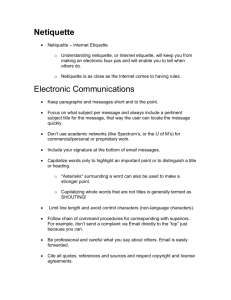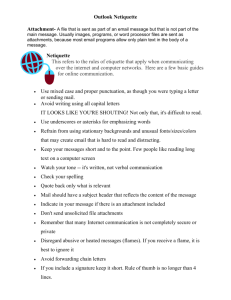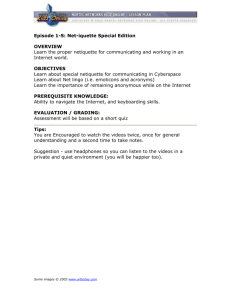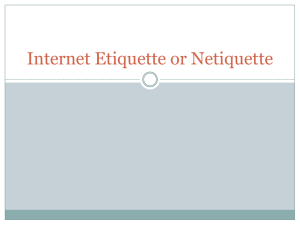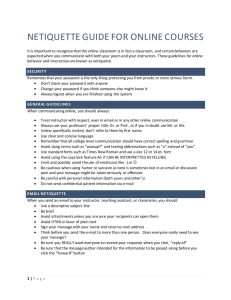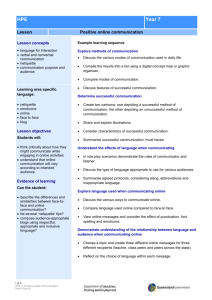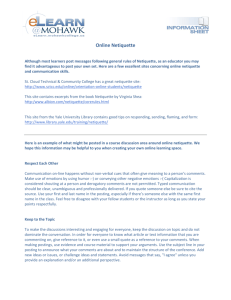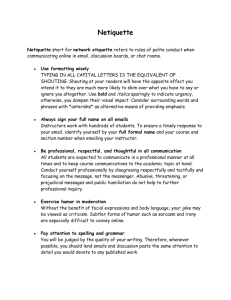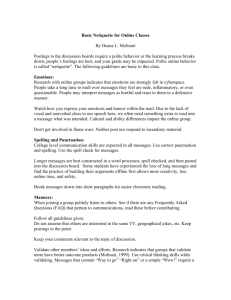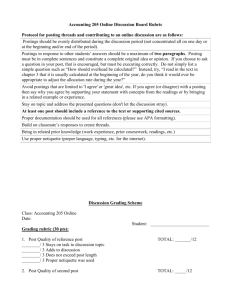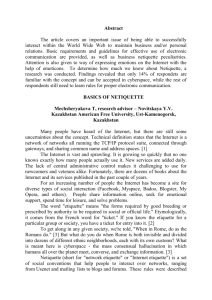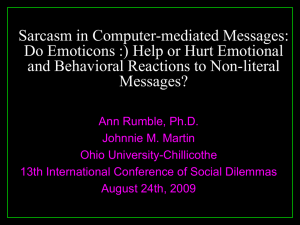Netiquette Guidelines: Online Communication Etiquette
advertisement
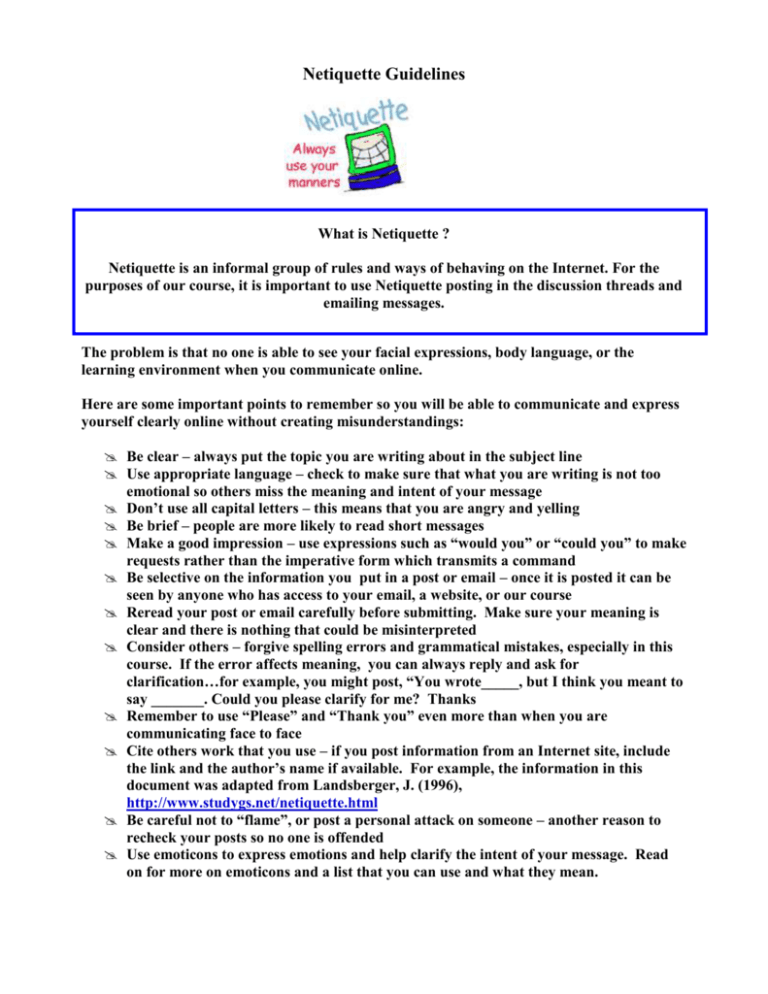
Netiquette Guidelines What is Netiquette ? Netiquette is an informal group of rules and ways of behaving on the Internet. For the purposes of our course, it is important to use Netiquette posting in the discussion threads and emailing messages. The problem is that no one is able to see your facial expressions, body language, or the learning environment when you communicate online. Here are some important points to remember so you will be able to communicate and express yourself clearly online without creating misunderstandings: Be clear – always put the topic you are writing about in the subject line Use appropriate language – check to make sure that what you are writing is not too emotional so others miss the meaning and intent of your message Don’t use all capital letters – this means that you are angry and yelling Be brief – people are more likely to read short messages Make a good impression – use expressions such as “would you” or “could you” to make requests rather than the imperative form which transmits a command Be selective on the information you put in a post or email – once it is posted it can be seen by anyone who has access to your email, a website, or our course Reread your post or email carefully before submitting. Make sure your meaning is clear and there is nothing that could be misinterpreted Consider others – forgive spelling errors and grammatical mistakes, especially in this course. If the error affects meaning, you can always reply and ask for clarification…for example, you might post, “You wrote_____, but I think you meant to say _______. Could you please clarify for me? Thanks Remember to use “Please” and “Thank you” even more than when you are communicating face to face Cite others work that you use – if you post information from an Internet site, include the link and the author’s name if available. For example, the information in this document was adapted from Landsberger, J. (1996), http://www.studygs.net/netiquette.html Be careful not to “flame”, or post a personal attack on someone – another reason to recheck your posts so no one is offended Use emoticons to express emotions and help clarify the intent of your message. Read on for more on emoticons and a list that you can use and what they mean. Emoticons and Abbreviations Emoticons are the simple symbols that represent feelings. Emoticons are made by combining two or more symbols, letters or numbers from the standard computer keyboard into a kind of pictograph turned on its side. Thus, a colon stands for a pair of eyes, a dash is the nose, and some other symbol becomes the mouth, creating a face that expresses visually what would take many words to say. Following are emoticons and standard abbreviations that are useful when communicating in cyberspace. EMOTICONS Smiles = Big smile or hahaha! = Tongue in cheek = Unhappy or sad = Really unhappy = Very sad = Forlorn = Smirk = Disgusted = Not funny = Shouting = "Oh, nooooo!" = Censored = Kiss = :-) or :-> :-D :-J :-( :-c (:-( :-< :-l :-| :/) :-O :-o :-# :-x ABBREVIATIONS: By the way = In my humble opinion = In other words = Laughing out loud = On the floor laughing = Grin = Big Grin = BTW IMHO IOW LOL OTF <g> <G> <grin> or <bg> More Netiquette Resources www.k12.hi.us/.../html/ethics/netiquette.html www.futureustore.com/.../papers/netiquette.html
